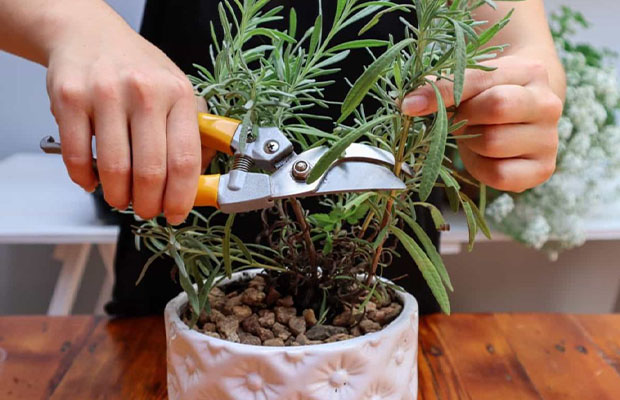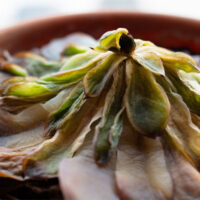One of the most well-liked garden plants in the world is lavender. Propagating lavender from cuttings is an incredibly simple process and will yield plenty of flowering plants from one propagating session. If you are not sure how to do it, we are here to help!
Lavender is most easily propagated by cutting rather than seed. This article explains how to propagate lavender from cuttings step by step.
The process is simple enough for a beginner to complete without the need for specialized tools. Let’s get started without further ado.
Table of Contents
Lavender Propagating Process
Read below our step-by-step guide on lavender propagating.
1. Prepare the Soil
It is always preferable to create your own soil mixture rather than using garden soil when rerooting cuttings. Tender cuttings attempting to establish roots require adequate drainage and the right soil consistency. Your success in growing lavender from cuttings will be less likely because garden soil is unreliable and might be home to pests or diseases.
Any soilless potting mixture with components like peat moss, perlite, sand, or vermiculite that drains well will work.
To root the cuttings, we’ve decided to use a 50/50 mixture of coconut coir and sand. Coconut coir, a more environmentally friendly substitute for peat moss, aids in the cuttings’ rapid root development and water absorption. The sand enhances drainage and more closely resembles the final soil conditions the plant will be in, reducing the possibility of transplant stress later.
For use, coconut coir must first be soaked in water after being shipped in small bricks. Before beginning, reconstitute the coir because the extra moisture will improve the coir and sand’s ability to bind together. This will give you an advantage because you must start with a moist potting medium anyhow.
Depending on what you have on hand, you can also use peat moss with additional perlite and vermiculite to improve drainage.
2. Remove the Cutting
Hardwood or softwood cuttings can be used to spread lavender. Both are viable options, though hardwood typically grows more quickly and has a higher chance of success.

Cut a piece of the plant’s base that is about four inches long. If you want the cutting to concentrate on growing roots, pick a stem that hasn’t flowered yet, or cut the flower off before allowing the stem to root. To avoid the possible spread of disease, always remove cuttings with a pair of freshly cleaned trimmers.
3. Remove the Lower Leaves
To encourage root growth, remove all of the leaves from the cutting’s bottom half. For photosynthesis on the top half, the cutting will still require a few leaves.
If you’ve taken a longer cutting, you can also remove a few leaves from the top of the stem by trimming the stem. Although not required, this could hasten root growth, particularly if the selected stem was about to flower.
While you’re at it, cut away any woody growth from the cutting’s bottom. The softwood is now left, which roots much more quickly.
4. Dip in Rooting Hormone
When establishing roots for softwood cuttings, rooting hormone is not always required. Cuttings of lavender also frequently take without the help of rooting hormone, proving that this is true. However, using it significantly raises your chances of success and reduces the likelihood of disease-related issues.
Rooting hormone works by promoting root development at the cutting point. This increases the likelihood of root growth and strengthens root growth, giving you stronger plants overall.
Typically, rooting hormone is offered for sale as a powder. It is offered online and in plant nurseries. I use this rooting powder.
To avoid possible contamination, always spoon a small amount of the powder into a different container before use rather than dipping directly into the tub. Simply dunk the cutting’s tip into water and rooting hormone before planting.
Never put unused powder back into the container; instead, discard it.
5. Plant the Cutting
With a skewer, poke a tiny hole in the mixture and insert the cutting, leaving a tiny bit of stem visible before the first set of leaves. To hold the cutting in place, gently press the soil around it.
If you transplant the cuttings into separate pots once the roots have grown, you can place several cuttings in the same pot to develop roots.
6. Put the Cuttings into a Safe Spot
Put the pot or propagation box in a location that will shield it from the sun, wind, and significant amounts of rain while it is being propagated.
The soil should always be evenly moist but not soggy. To ensure that the soil never completely dries out, check on them every day. If you are not using plastic, you can mist the cuttings instead.
Also Read:
What Are Lavender Cuttings?
Cuttings of the lavender plant’s active growing stems can develop into new lavender plants. By placing these stems into a growing medium and keeping them watered, they produce new roots and shoots that can later be transplanted to your garden.
The cheapest, simplest, and quickest way to increase the size of your herb garden is by using lavender cuttings. Even the trimmings from your yearly pruning of lavender can be used as cuttings!
Related Reading: Smoking Lavender Pros And Cons
When to Propagate Lavender?
Lavender is best propagated in the middle to late summer, when it is hot and humid outside and they are in their active growing season.
Cuttings that are taken too late in the summer or in the fall, when the plant is beginning to prepare for the winter, may not take root.
Related: When Does Lavender Bloom?
Can You Propagate Lavender in Water?
Water can be used to spread lavender. Although challenging, we have discovered that soil propagation is the best technique for our needs because lavender is prone to root rot.
Quick tips:
- Fill a glass with water about halfway if you want to propagate with water.
- When clipping and preparing lavender stems, use the same technique, leaving a few inches at the stem’s base.
- Make sure the water in the cup is not too high to touch the lavender’s leaves before adding it.
- To ensure your plant has access to fresh water, leave in water and possibly change it every few days.
Read More: How Often to Water Lavender?
Lavender Propagation FAQs
Can You Root Lavender Cuttings in Water?
Yes! Lavender can be propagated using water.
How Long Does Lavender Take to Root from Cuttings?
The growth of roots on lavender cuttings can take three to six weeks. The quicker they root, the warmer and more humid the environment.
Can I Propagate Lavender Without Rooting Powder?
When propagating lavender, you do not require rooting hormone. But if you use it, you’ll have much more success getting cuttings to take root in soil. It can be purchased reasonably priced and easily at any garden center.
Final Words
It’s actually quite simple and rewarding to grow lavender.
You can quickly grow lavender from cuttings if you adhere to the straightforward instructions provided here. May the abundance of fragrant purple blossoms and content bees grace your summer!
It’s entertaining and addictive to propagate plants! If you want to learn how to propagate even more of your favorite plants, read our post on How To Propagate Succulent.

















